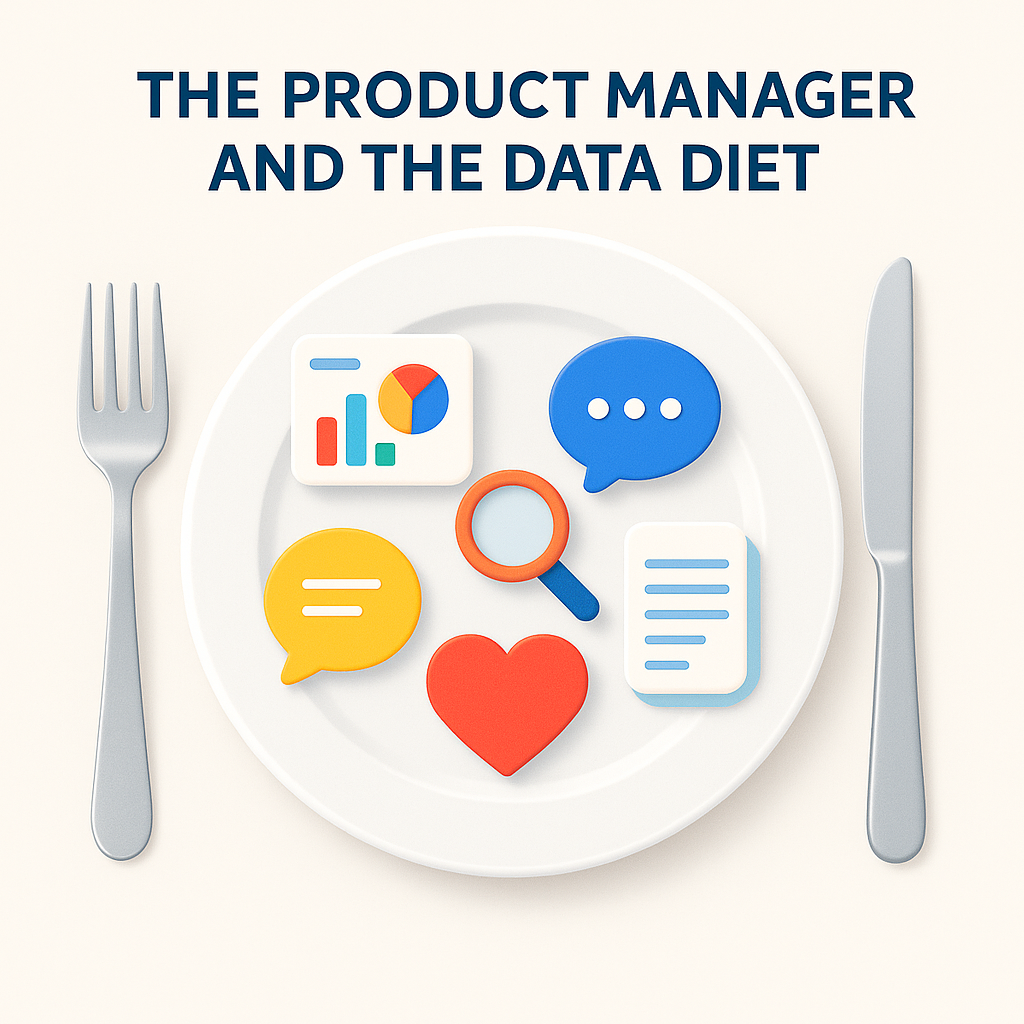In a world driven by data, the role of the Product Manager (PM) has become increasingly dependent on the ability to interpret information from multiple sources. Just as a balanced diet is essential for physical health, a balanced “data diet” is fundamental for the health of a digital product. This concept, often discussed in product management classes and talks, reinforces that decisions based on a single type of data — or a single source — are risky. The PM’s job is precisely to balance the consumption of qualitative and quantitative data to avoid bias and build products that truly solve real problems.
Why a Product Manager Needs a Balanced Data Diet
One of the most common mistakes in product management is relying too heavily on a single source of truth — whether that’s customer feedback, analytics, or market trends. A PM who makes decisions from only one point of view risks “feeding” the product with incomplete data, leading to biased or inaccurate decisions.
A balanced data diet includes different types of “informational foods,” such as:
- Internal feedback – insights from sales, support, and operations teams who deal daily with users and product bottlenecks;
- Usability tests and user interviews – qualitative information rich in empathy and context;
- Analytics and usage metrics – quantitative data that measures behavior and validates hypotheses at scale;
- Online feedback – public reviews, communities, and social media revealing brand perception and user experience;
- Market trends and news – indicators of competitive movements and macroeconomic changes;
- Competitor analysis – continuous observation of the ecosystem, helping to adjust positioning and detect opportunities.
The Role (and Limits) of Customer Interviews
Customer interviews are often treated as the main course of the data diet. They provide narrative richness, uncover pains and desires, and humanize the decision-making process. However, it’s important to recognize their limitations:
- They don’t scale – a PM can’t talk to thousands of users. Each conversation brings depth but not representativeness.
- They are qualitative – they reveal perceptions, not proportions. Without quantitative support, there’s a risk of overvaluing individual cases.
That’s why PMs must avoid falling into the “small data bias” trap — making decisions based on a few voices or personal experiences. Interviews are an essential dish, but they can’t be the only source of informational nutrition.
From Insight to Decision: The Role of Synthesis
Consuming data is only the first step. The PM’s true value lies in turning scattered information into strategic decisions. This requires:
- Filtering noise and prioritizing relevant information;
- Connecting qualitative and quantitative data to validate hypotheses;
- Creating product narratives that justify decisions to stakeholders;
- Periodically reviewing data sources to avoid confirmation bias.
Just as a healthy diet depends on variety and moderation, product management depends on diversity of inputs and analytical discipline.
The Maturity of the Data Diet Across the Product Lifecycle
The data diet should evolve as the product matures:
- Discovery phase: focus on qualitative data (interviews, observation, prototypes);
- Growth phase: balance between usage metrics, feedback, and A/B tests;
- Scale phase: intensive use of analytics, automated data collection, and market benchmarks.
At every stage, the PM must avoid both data indigestion (too many dashboards without purpose) and data deficiency (intuitive decisions without evidence).
Conclusion: The PM as a Data Nutritionist
The modern Product Manager is a curator of information. Their role is to ensure the team consumes data consciously, diversely, and effectively. The combination of empathy (qualitative data) and precision (quantitative data) is what distinguishes a product guided by assumptions from one guided by evidence.
Ultimately, the data diet is not about collecting everything — but about choosing wisely what to consume. The PM’s intelligence lies in knowing when to listen, when to measure, and above all, when to decide.
Conceptual Summary

Article takeaway: In short, a PM must be a “data nutritionist,” balancing quality, quantity, and diversity of information. Only then can a product remain healthy, competitive, and truly user-centered.

